If you have not done so already, you may wish to begin this exercise by reading the first article in the series, which provides background on the protagonist and his unit.
Thanks to the recent arrival of fifteen reservists, your platoon now consists of two sergeants, four corporals, and fifty-five privates. The sergeants lead half-platoons [demi-sections], each of which consists of two squads. The corporals lead squads [escouades], each of which can put thirteen or fourteen rifles into the firing line.
On 14 August 1914, your division crosses into the lost province of Alsace, near the city of Château-Salins, which is some twenty-eight kilometers (seventeen miles) northeast of Nancy. Five days later, it enters the forest of the same name.
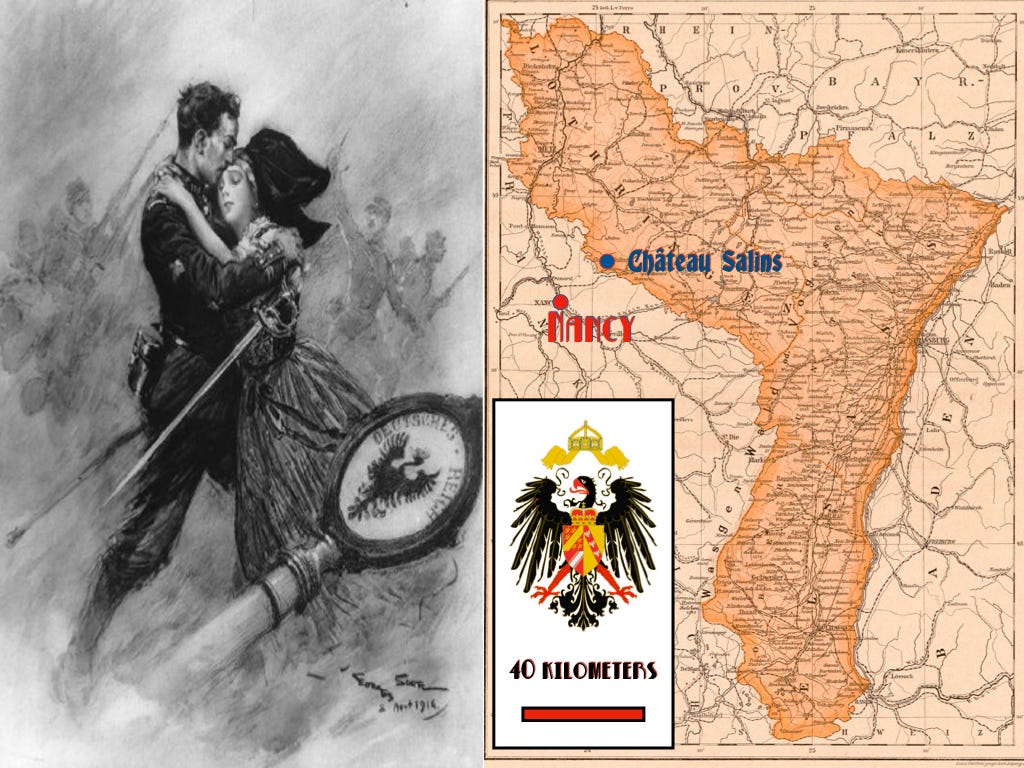
At 1300 on 19 August 1914, the four infantry regiments of your division have taken up positions in the northeastern corner of the forest, a place where the thick foliage protects them from both the heat of the midday sun and the view of any Germans who might be watching.
While you and your men are enjoying your lunch, the regiments of your division receive orders to resume their advance. The two regiments to the right of the 153e Régiment d’Infanterie will form the main effort of your division, which is aimed at the city of Morhange. The single regiment on your left will protect your division from any attack that might come from the west. Your regiment will advance along an axis that runs parallel to that of the main effort.
You proceed to the edge of the woods in order to examine the open ground that you and your platoon will soon be crossing. Ahead of you, see see a road, running from southwest to northeast, that connects a series of low hills. North and west of the road, you see two streams, each of which runs on a path that is perpendicular to your axis of advance.
Most of the ground is covered with the stubble of a crop of oats and wheat that, as far as you can tell, was harvested a few days ago.
Looking to the southeast, on a piece of high ground near the edge of the woods, you see two officers engaged in conversation. You recognize one as Colonel de Grandmaison and the other as the commanding officer of your company. Not far away, you notice the remains of a French cavalryman and his horse.
Immediately in front of you is a long, grass-covered slope that runs for a couple hundred meters to the north and east. At the bottom of the slope is a ravine. Beyond the ravine, the ground rises up to form a spur.
It will soon be time for you to begin your advance. What are your orders to your platoon?
Please feel free to use the comment section to describe your solution to this problem. In doing this, please take care to avoid any information that would spoil the problem for your fellow readers.
The next step in this exercise is the presentation of the historical solution, which can be found at the beginning of the post called Platoon (Problem II). If you wish to reap full benefit from this decision-forcing case, please refrain from reading the historical solution until you have come to a decision.
This exercise serves neither as an argument for particular courses of action nor a criticism of decisions made in specific circumstances. Rather, it exists to give participants opportunities to immerse themselves in problems faced by a real person at some point in the past, and, in doing so, cultivate such martial virtues as decisiveness, critical thinking, creativity, situational awareness, and functional empathy.



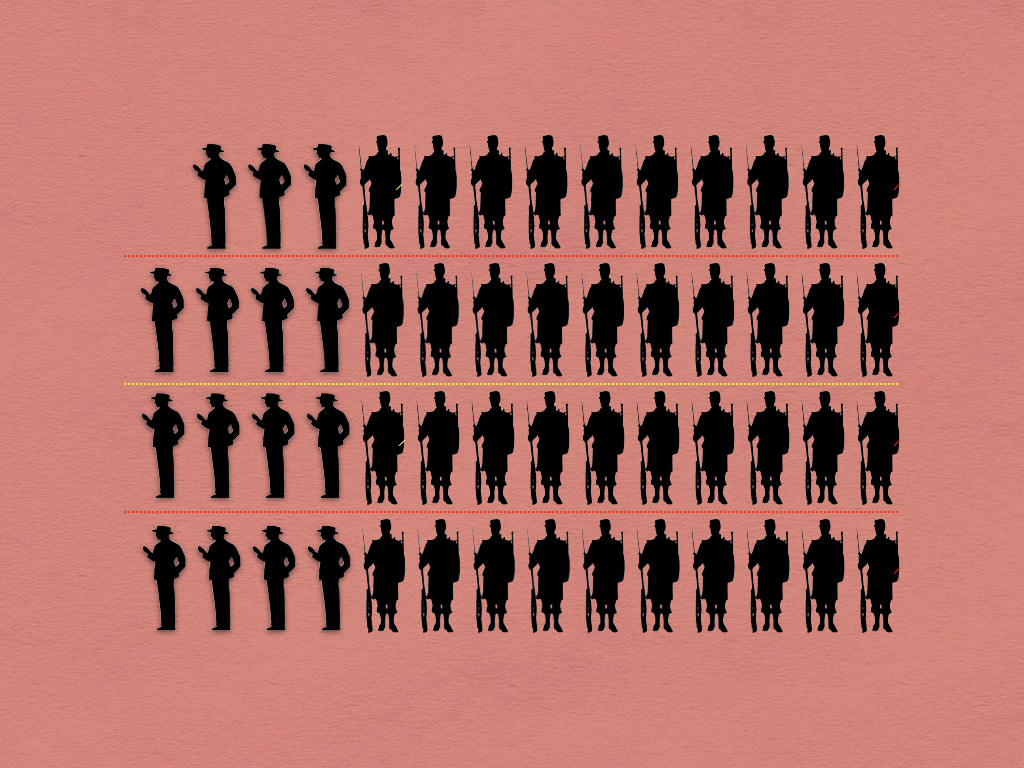
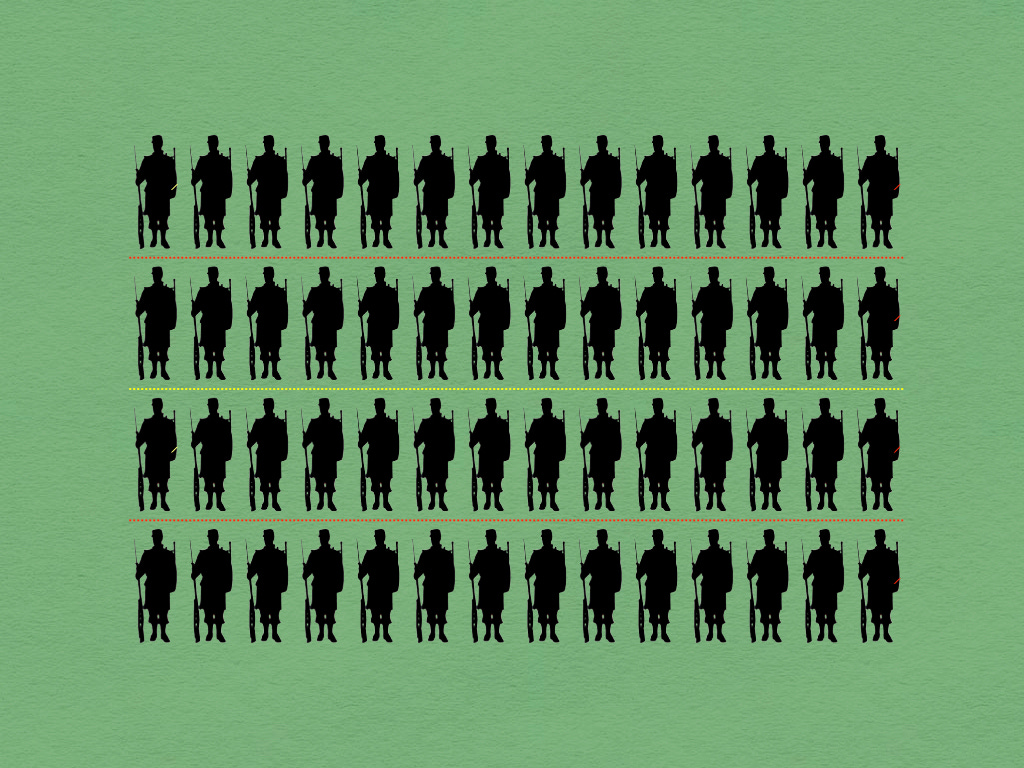
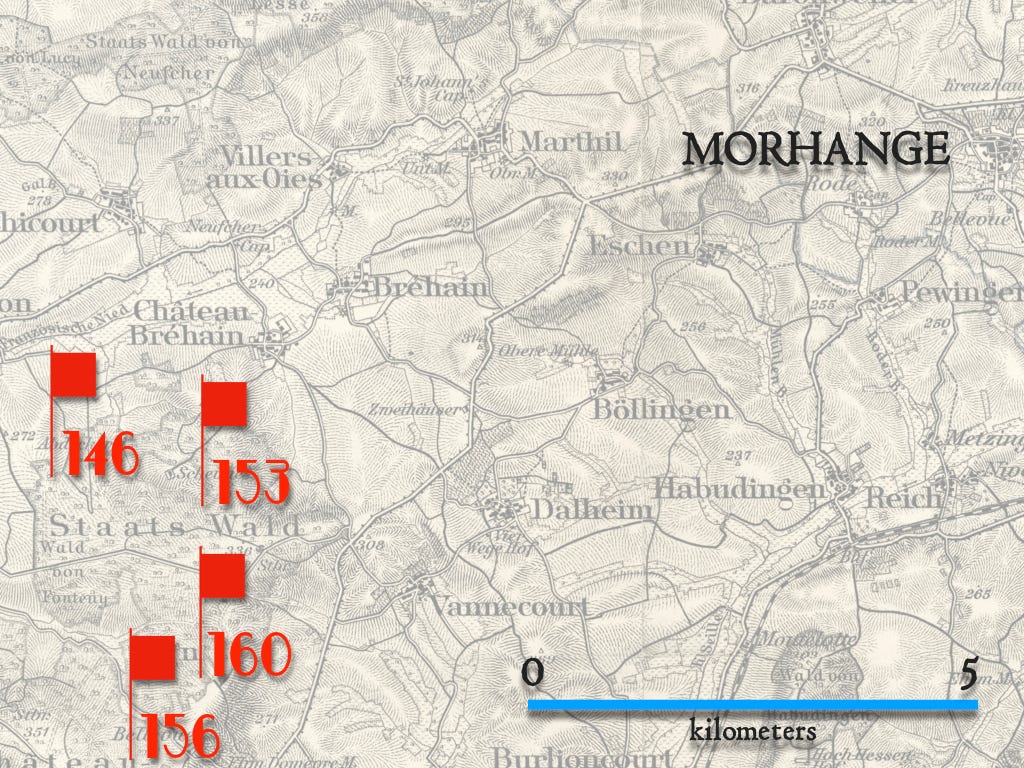
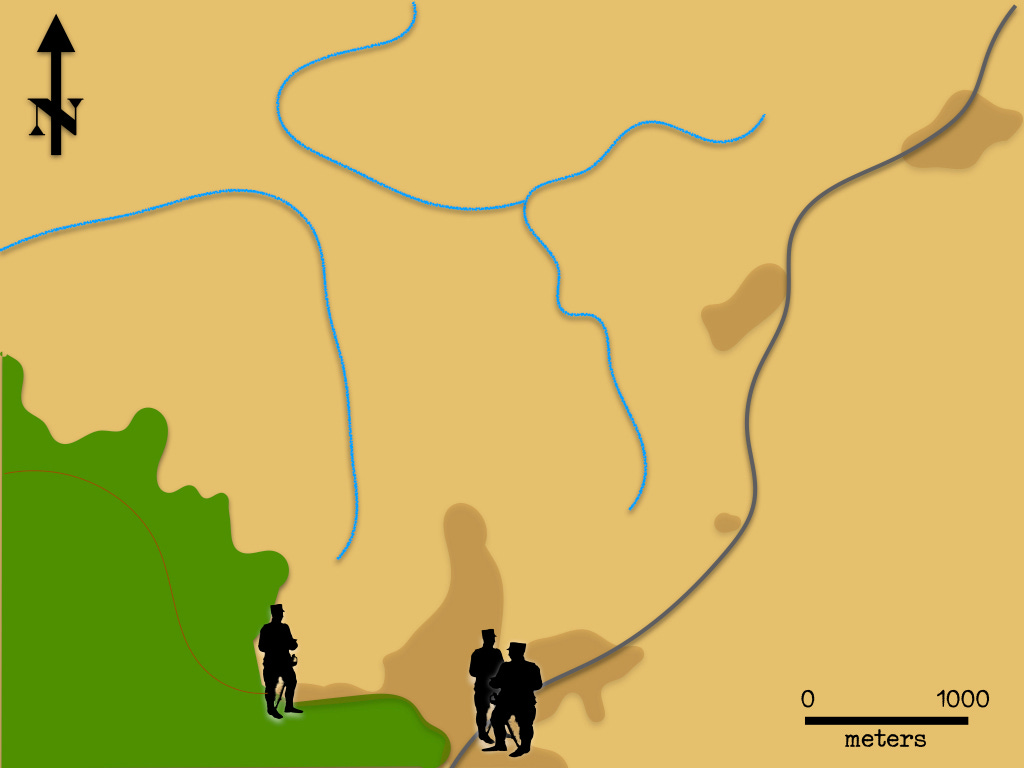
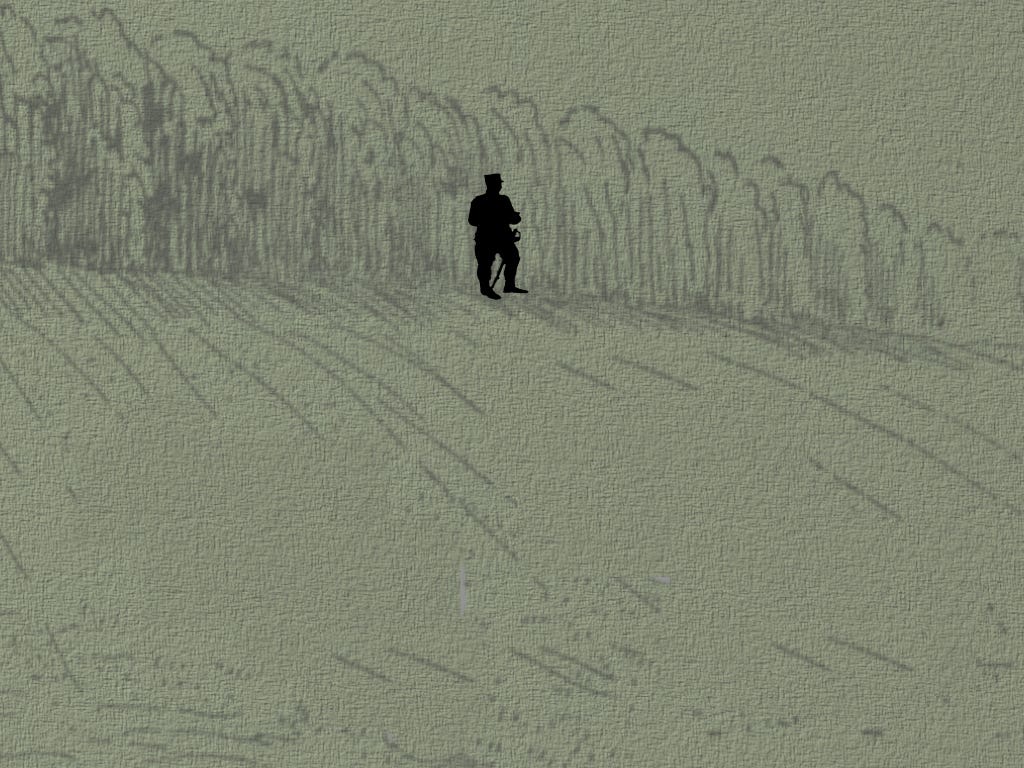
Advance along the road - presumably it will have been sighted for artillery but the ground's open anyway and the only possible cover if attacked is the hills the road connects. At least it seems there's no enemy direct-fire artillery in the immediate area.